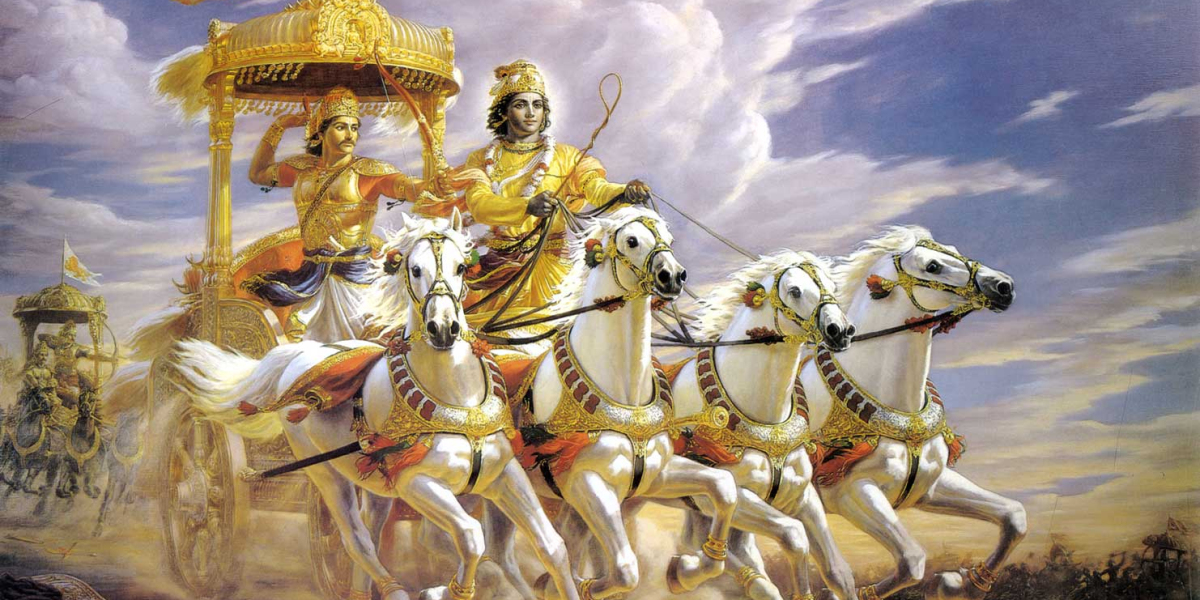Summary of Bhagavad Gita Chapter 1
The Bhagavad Gita, a 700-verse section of the Indian epic Mahabharata, opens with its first chapter known as Arjuna Vishada Yoga, or the Yoga of Arjuna's Dejection. The battlefield setting of Kurukshetra is where the Pandava and Kaurava armies stand ready for war, with Arjuna, a Pandava prince, as a central figure.
As the conch shells sound, signaling the approaching battle, Arjuna, driven by a moral dilemma, asks his charioteer, Lord Krishna, to position their chariot between the two armies. He sees relatives, teachers, and friends on both sides, and his heart is heavy with anguish at the thought of fighting his kin. Overcome with sorrow and compassion, Arjuna questions the righteousness of the war and expresses his unwillingness to kill his kith and kin for the sake of an earthly kingdom.
Questioning the moral implications of warfare, Arjuna is struck by the destructiveness of war, both in terms of the physical casualties and its impact on societal values and family structures. He articulates his concerns about the consequences of killing his family members, the resultant sins, and the collapse of family traditions. In his distress, Arjuna puts down his bow and declares that he cannot fight.
Arjuna's crisis sets the stage for the teachings of the Bhagavad Gita, as his dejection symbolizes the conflict faced by each individual who must tackle their own battles within the societal and moral context. Lord Krishna's response to Arjuna's despondency and ethical confusion begins from chapter 2, forming the core philosophical and spiritual message of the text.






